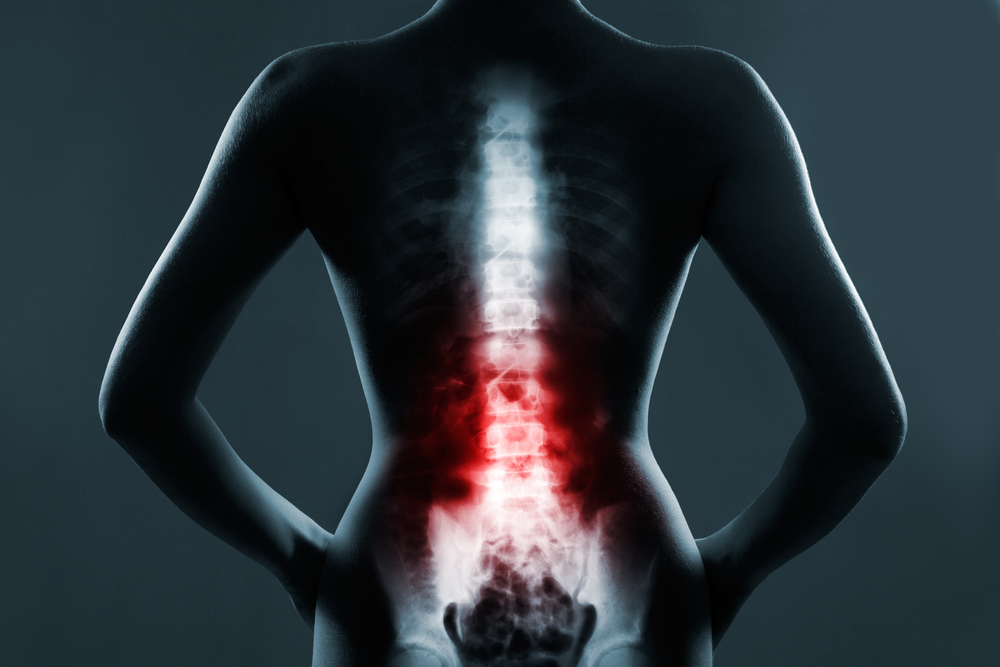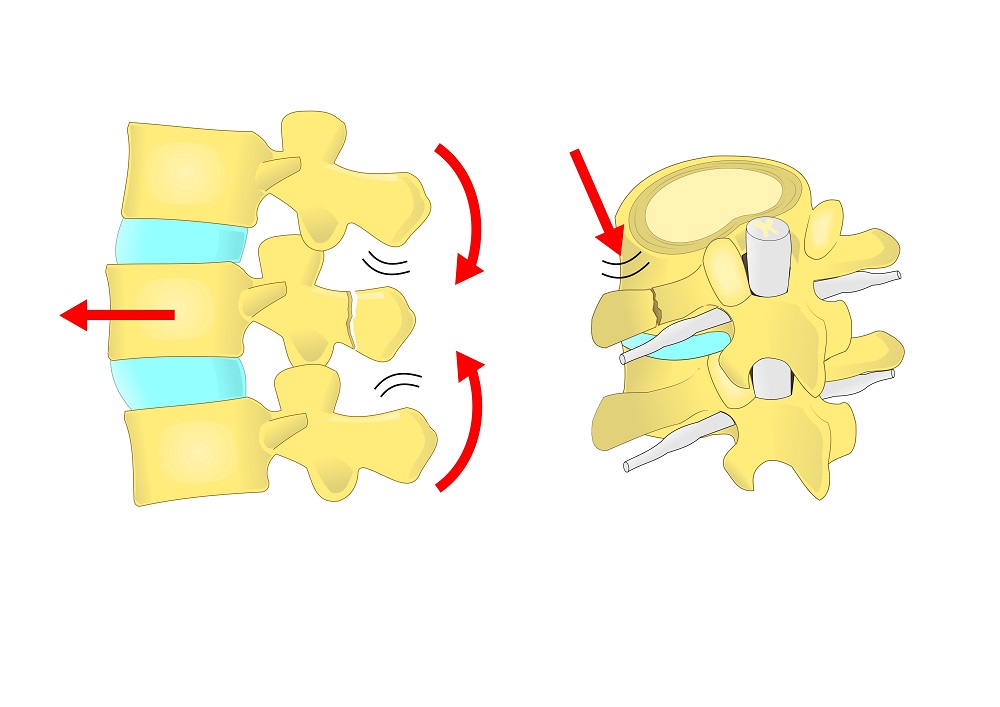- Sudden onset of back pain (increasing pain during movement)
- Hematoma
- Malpositions
- Abrasions
- Fracture in the area of the cervical spine: no free head movement (forced posture)
- Larger or smaller spaces between spinous processes in the affected area
- In case of spinal cord or nerve tract injuries:
- Numbness
- Amyosthenia (Muscle weakness)
- Muscle paralysis
- Urinary and fecal incontinence
- Paraplegia
- In case of an existing disease (osteoporosis, cancer e.g.) that has already damaged the bone structure: Bone fractures
Younger adults
Usually, a vertebral body fracture in younger people is caused by strong external forces, such as:
- Car or sports accidents
- Jumps into shallow water
- Falls
- Physical force, e.g. kicks, stab and gunshot wounds
- Accidents at work and at home
Elderly and sick people
If the bone structure is already damaged and the bone is weakened, e.g. by osteoporosis or cancer, the vertebra can break with everyday stresses (and without external impact). Sometimes a trivial injury is enough to cause vertebral body fracture.
But a vertebral body fracture may also have any of the following causes:
- Rheumatism
- Osteomalacia (softening of the bones)
- Osteitis (Inflammation of bone)
- Bone cancer
- Skeletal metastases
There is an increased risk for vertebral fracture if a vertebral body fracture develops due to osteoporosis. In case the fracture causes a severe hunchback, the lung function may deteriorate and the risk for a secondary disease can increase.
If a patient has any of the symptoms mentioned above, he/she should definitely see a doctor. Depending on the extent of the injury, a vertebral body fracture can heal very well if therapy starts in time.
During consultation, the physician should get all the important details, e.g. on a previous accident or an existing disease that might be the cause of the vertebral body fracture. Subsequently, various imaging examination procedures follow, such as x-ray, computed tomography (CT) or magnetic resonance imaging (MRI). Patient and doctor decide together if surgery is needed. However, if e.g. the spinal cord is injured, it is necessary to operate quickly.
Surgical procedures are, for example:
- Spondylodesis: Two or more vertebrae are stiffened, e.g. with Fixateur interne (internal fixation)
- Ventral stabilization: e.g. with a Cage (fills the intervertebral space)
- Kyphoplasty: The vertebral body is stabilized using an expandable balloon.
Treatment of the vertebral body fracture is supposed to restore the stability of the spinal column, ease pain and prevent abnormal biomechanical stress. After treatment, it is very important to train the mobility with physiotherapy as early as possible.
Preventive measures
Vertebral body fractures might be prevented with a few precautions, such as wearing a seat belt in the car or using protective gear in sports. Patients with damaged bone structure caused by osteoporosis or cancer should try to minimize the risk of accidents. It is also important to get best possible treatment for existing diseases at an early stage to reduce the risk for vertebral body fracture.


